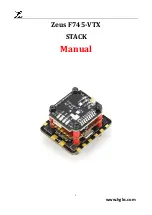
5-33
Chapter 5 AN100U/UX Troubleshooting
Redline Communications Inc. Confidential and Proprietary
This message indicates that the radio was able to synchronize on an interfering signal.
Additionally, it was able to detect the sector controller ID (i.e. MAC address) of the
interfering WiMAX sector controller.
Note
In order to detect the sector controller ID of the interfering sector controller, it must
be operating with the same cyclic prefix and channel bandwidth.
When you see this message you will need to further isolate the source of the
interference and the impact on your sector.
•
WARNING: Unknown Interference was Detected on the Uplink Channel (RSSI dBm)
This message indicates that the radio was able to synchronize on an interfering signal.
However, it was not able to detect the sector controller ID of the offending system.
The interfering signal is not necessarily a WiMAX system, nor is it necessarily even an
OFDM system.
See “Interference Messages at Startup” on page B-19 for details on how these messages
are determined and details on noise floor calculations.
AN100U/UX Web Client Status Page
The noise level is also reported in the Web client’s Status page. See “Monitoring Statistical
Results Screens” on page 2-8.
This value is measured in a slightly different manner than the value reported in the event
log. This value is measured once the system has become fully operational, and is updated
continuously. It is also an averaged value, as opposed to an instantaneous measurement.
The AN100U/UX uses any remaining (i.e. unused) space in the uplink to perform channel
measurements. It collects 200 samples, averages them, and then updates the noise level
measurement. Since the AN100U/UX only uses unused space, this means that it has no
effect on QoS or sector capacity. Additionally, it means that the frequency at which this
value is updated depends on sector usage. In sectors with low usage, where the
AN100U/UX can collect the required sample very quickly, the value may be updated at
1-second intervals. In sectors with a high volume of uplink traffic, it may take much longer
to collect the 200 samples.
Both the event log and Status page values are measured during the uplink sub-frame only.
Thus, if you are using synchronization in your network, adjacent/co-located sectors should
not be detectable. If you are seeing interference from supposedly synchronized sectors
within your own network, you need to verify the configuration/status of your
synchronization solution.
Performing a Site Spectrum Analysis
The purpose of a spectrum site analysis is to identify potential sources of RF interference
that might be found at a current or prospective site. Refer to the document, A Guide to Field
Spectral Analysis, for a detailed description of the equipment required, the recommended
















































